Consider the double neck. Half six string, half something else, part curiosity and entirely awesome.
For a class of instrument that makes up a tiny fraction of the world's vintage guitar stock, double necks - the Gibson EDS-1275 in particular - claim a disproportionate slice of popular guitar iconography.
The reason is obvious: double necks look cool. Like the rock stars that play them, double neck guitars are striking, otherworldly, and a bit ostentatious. There are many types of double necks used by many types of players.
It begs the question: who has actually tamed these beasts over the years?
Double Neck Origins
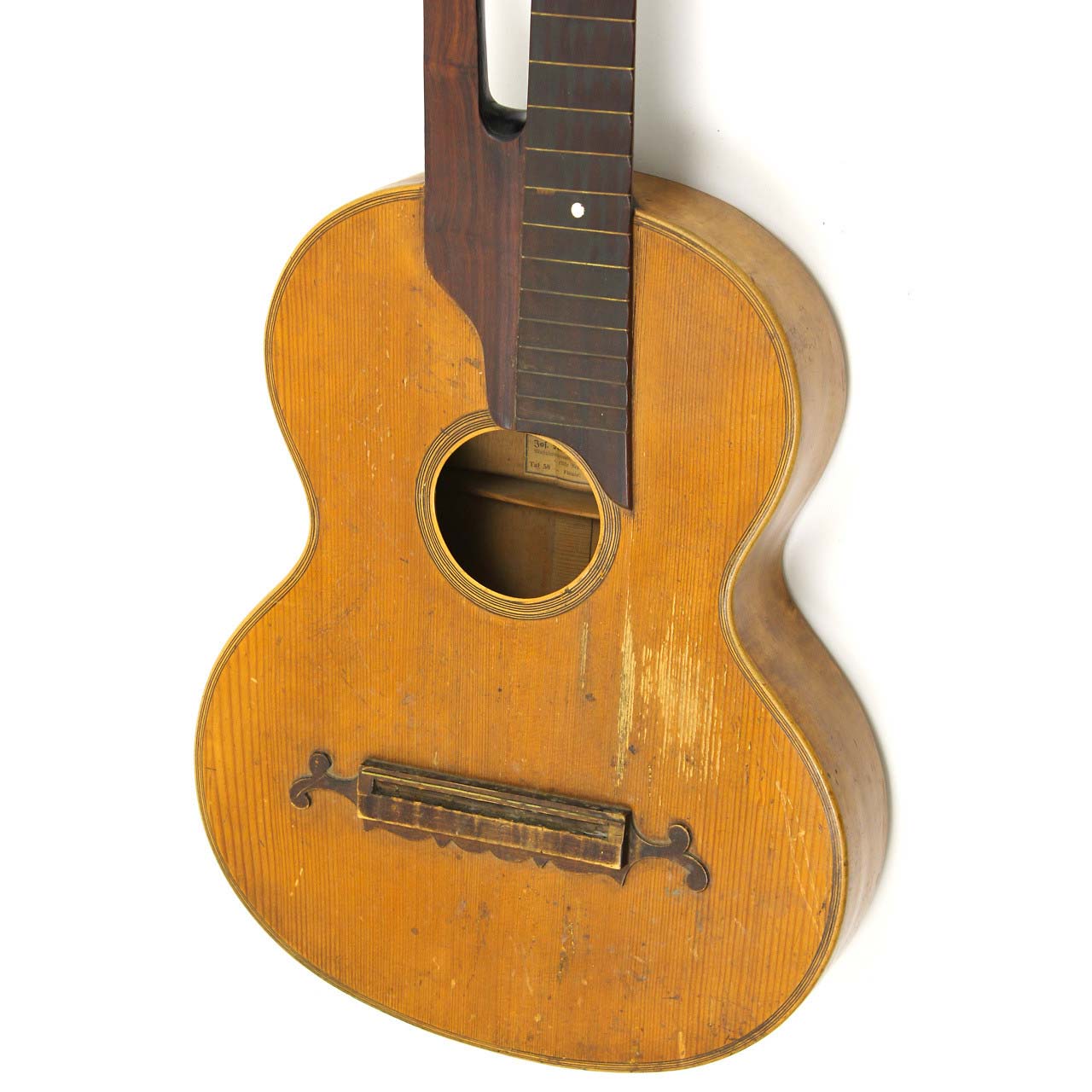
The 1950s saw the rise of the modern double neck electric guitar, but the story of stringed instruments with more than one playing surface goes back centuries.
The Renaissance in Europe saw a diverse expansion and evolution of plucked stringed instruments. Historical paintings and artifacts show lutes, theorbos and more with multiple necks and multiple headstocks at different lengths on the same neck.
In the late-19th and early 20th centuries, prominent American makers built harp guitars following a similar format.
The droning playing style behind these was only briefly popular, but we still see intact harp guitar examples crop up on Reverb all the time. Other acoustic double necks were made in this era and earlier including mandolin-guitar hybrids, but none on a commercially broad scale.
In the 1920s and 1930s, countless slide Hawaiian guitars were built with different necks for different tunings. These instruments were the most popular double necks yet. Their lineage can be followed through the electric lap and pedal steel guitars of today.
Mosrite, Maphis and Country Television
Like all things electric guitar, the 1950s were a watershed for the double neck concept. It was none other than guitar engineering prodigy Paul Bigsby who developed some of the earliest examples.
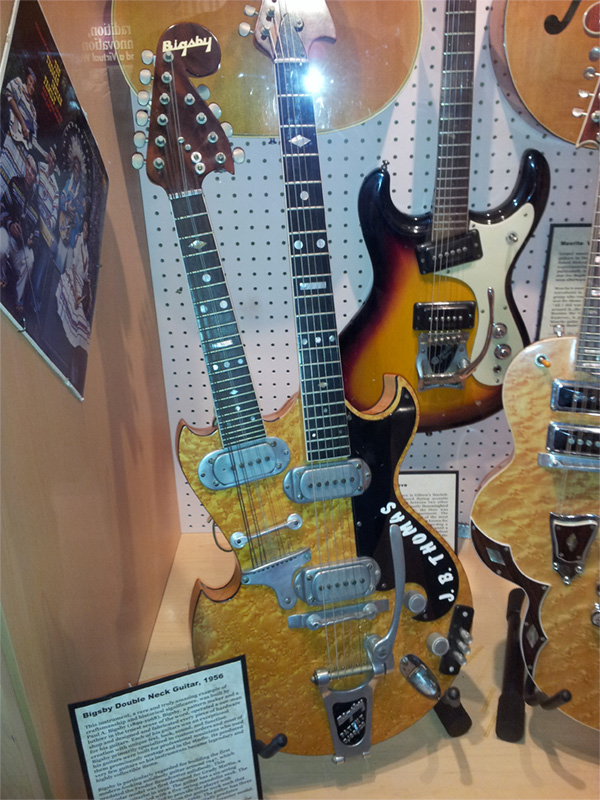
According to a 2009 article from Premier Guitar, Bigsby produced around six double necks as custom orders usually in a guitar-mandolin neck configuration.
Like much of Bigsby's work, it was one of his disciples who broadened the double neck's impact.
Former Bigsby apprentice Semie Moseley went into business for himself in the mid-'50s and built both two- and three-stringed instruments in a Southern California shed under the brand name Mosrite.
He presented one to country performer Joe Maphis, who played his double neck on nationally televised programs like the weekly Town Hall Party.
Maphis was a virtuosic player whose influence reached through thousands of black and white TV sets. Many of his appearances included youngster Larry Collins of The Collins Kids in a guitar-slinging sidekick role, also playing a Mosrite.
In addition to the normal guitar setup on the bottom, the upper neck on these instruments was a short-scale guitar tuned an octave up. While similar in scale to a mandolin, these necks allowed Maphis and Collins to add zippy, high-pitched leads to their performances - and to cram in their names in bold inlaid lettering.
Maphis' primary Mosrite now resides in the Country Music Hall of Fame. More recently, this style of double neck has been used by rockabilly revivalist and all-around guitar dude, Deke Dickerson.
Classic and Prog Rock of the 1970s
As you read the title of this article, you may have muttered the name "Jimmy Page" to yourself. Without doubt, that sturdy pillar of the rock nostalgia pantheon was and is the primary driver of the double neck image.
Page purportedly ordered a custom Gibson EDS-1275 double neck for performances of the varied sections of “Stairway to Heaven." It fit perfectly with Led Zeppelin’s multi-instrumentalist approach as a band.
Within one Zeppelin set, you might have John Paul Jones doubling on organ and mandolin, while Bonzo's gong and Vistalite set covered wide swaths of the sonic spectrum. In playing twelve- and six-string parts within one song, Page was really just keeping pace with his rhythm section.
As the arms race for more ambitious arrangements and complex rock compositions continued, the double neck's on-stage versatility found more and more adherents. Don Felder of The Eagles played a Gibson EDS on “Hotel California," while fusion pioneer John McLaughlin began incorporating one into his sets.
This need for live versatility was perhaps most pronounced for the prog rock titans of the decade. Both Alex Lifeson and Geddy Lee of Rush toured with double necks, with Lifeson wielding a Gibson and Lee playing a custom-built Rickenbacker 4080 on songs like “Xanadu."
Beyond Rush, Mike Rutherford of Genesis and both Steve Howe and Chris Squire of Yes appeared with multiple necks in hand.
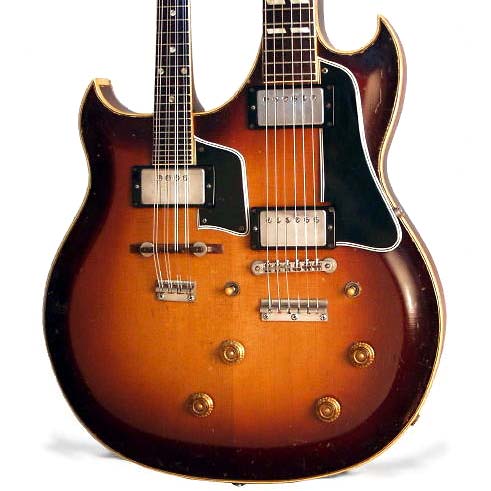
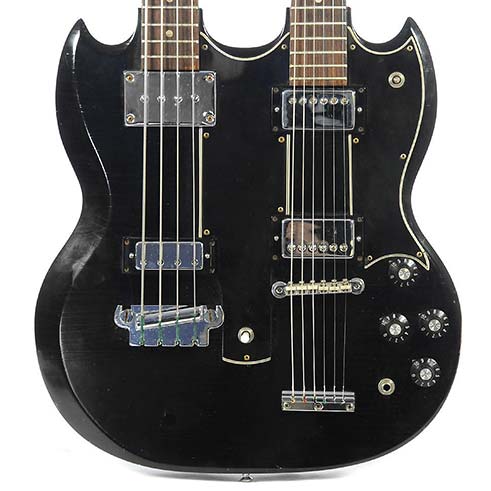
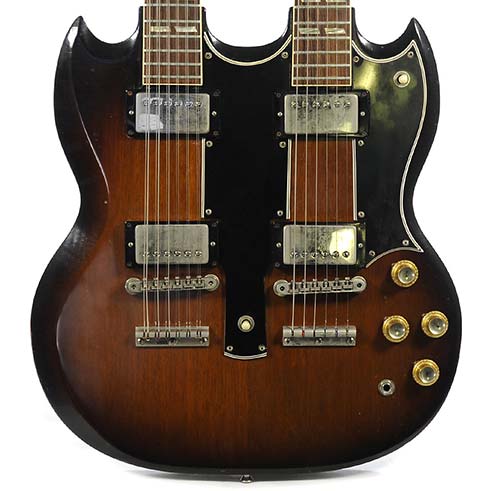
Unplugged Double Necks
Flash forward to the '90s, a decade that had rock artists showcasing their more sensitive acoustic sides.
Slash played an EDS-1275 as well as a double neck B.C. Rich on many occasions with Guns and Roses. A more peculiar custom Guild acoustic-electric hybrid known as the “Crossroads" made its way into his collection in 1993.
In this same era, Richie Sambora of Bon Jovi appeared frequently with acoustic-electric Ovation double and triple neck guitars. Most famously, Sambora and Jon Bon Jovi performed a duet rendition of "Dead or Alive" at the 1989 MTV Video Music Awards.
Metal Double Necks
Like their earlier prog rock counterparts, metal guitarists of every sub-genre and style have discovered the utility of the double neck proposition.
Naturally, instrumental rock icons like John Petrucci and Steve Vai have played double and triple necks, including this video of Vai featuring some the greatest guitar faces of all time. Skip to around the five minute mark. Trust me.
On the harder side of things, modern sludge, drone, and extreme metal schools include their share of double neckers. Brett Hinds of Mastodon often plays one, as does Takashi of the Japanese avant-metal mainstay Boris.
Final Double Thoughts
This is just a cursory glance at the world of double neck guitars. There are hundreds of worthy players not mentioned here that I'm sure I'll get called out on in the comments.
I can already hear you typing about how I missed Rick Nielsen's five-necked Hamer.
For a wider view on the wonderfully diverse world of double-necked instruments out there, browse our handpicked collection below.
